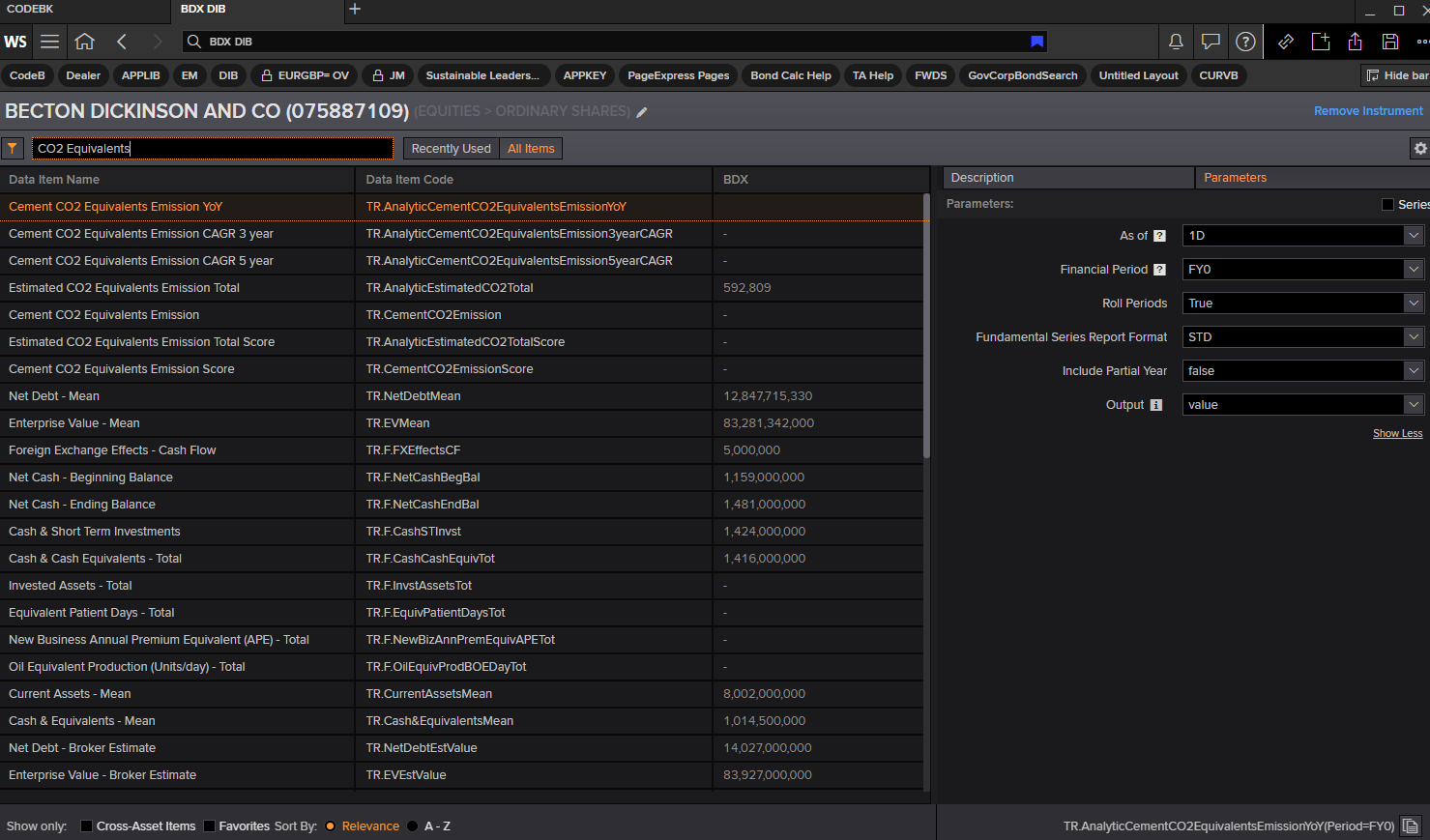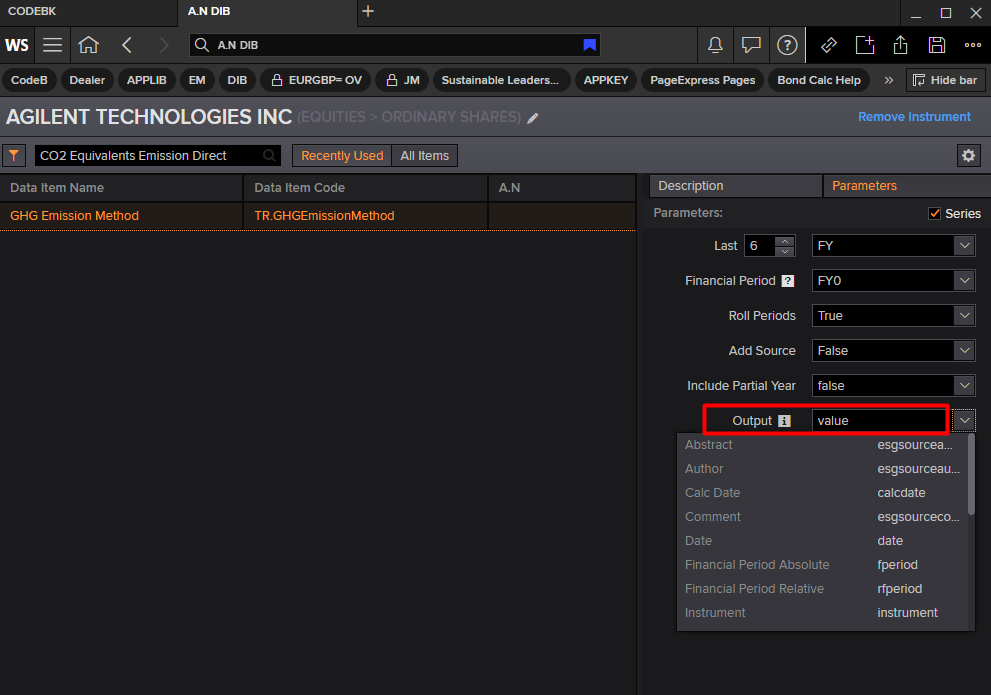Hello Team, I have a client with a query as below.
I am trying to use the CODEBOOK app (CODEBK) - a development environment for financial coders with a fully hosted cloud-based kernel for Python computations, closely integrated with Refinitiv.
I am currently attempting to extract Scope 1 and Scope 2 emissions based on a list of ISIN codes. I have done this using batches due to the size of my dataset. However, it seems that I do not obtain the complete dataset, nor with year specification. I did use the Datastream Excel add-in for a small part of my data, just to see the output (the data is in 'Sheet 2') with this formula:
=@DSGRID('Sheet 1'!$Z$1:$Z$499567,"ENERDP024;ENERDP025","-20Y","","Y","RowHeader=true;ColHeader=true;DispSeriesDescription=false;YearlyTSFormat=false;QuarterlyTSFormat=false;MonthlyTSFormat=False","")
However, my data is too large to manage in Excel. I have attached my original dataframe with institutional holdings in 'Sheet 1'. I want to extract the scope 1 and scope 2 for each ‘rdate’ for each company ‘isin’. How can I obtain this in my Python environment? This is the code I attempted to run in my Python environment. The dataframe is exactly the same as 'Sheet 1' in the Excel file attached. Here is the code: import pandas as pd import refinitiv.data as rd import numpy as np
# Read the Excel file to get the ISIN df = pd.read_excel('financial_data.xlsx') # Adjust the path as necessary
# Generate unique list of ISINs from the DataFrame isin_list = df['ISIN'].dropna().unique().tolist()
# Function to split a list into n roughly equal parts def split_into_batches(lst, n): for i in range(0, len(lst), n): yield lst[i:i + n]
# Modify this number based on needs number_of_batches = 10 # Adjust for desired batch size
# Determine batch size batch_size = len(isin_list) // number_of_batches + (len(isin_list) % number_of_batches > 0)
# Split ISINs into smaller batches isin_batches = list(split_into_batches(isin_list, batch_size))
# Initialize session and fetch data for each batch rd.open_session()
# Initialize an empty DataFrame to store results all_data = pd.DataFrame()
for batch in isin_batches:
# Fetch data for the current batch of ISINs batch_data = rd.get_data( universe=batch, fields = [ 'TR.CO2DirectScope1(Period=FY0,Frq=FY,SDate=0,EDate=-20)', 'TR.CO2IndirectScope2(Period=FY0,Frq=FY,SDate=0,EDate=-20)' ]) # Append the fetched data to the all_data DataFrame df = pd.concat([all_data, batch_data], ignore_index=True) rd.close_session() display(df)







